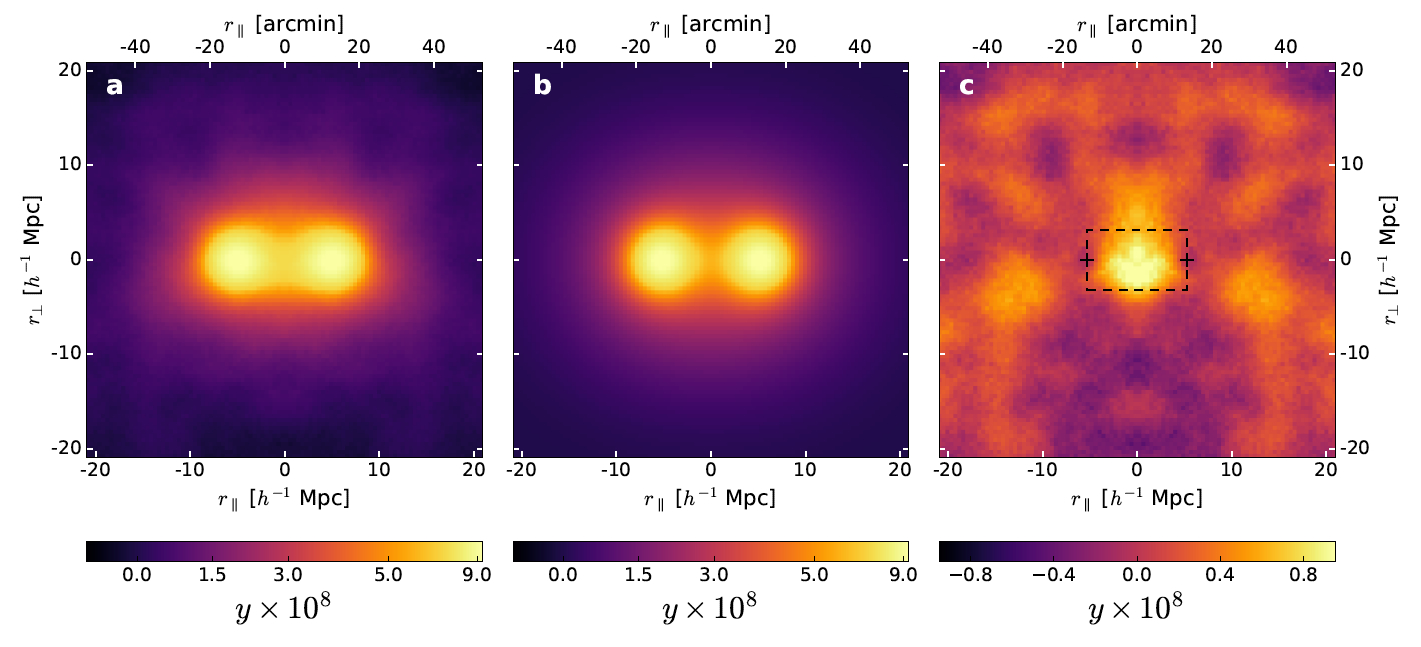Missing Baryons Found in Filaments
Observations of galaxies and galaxy clusters in the local universe can account for only 10% of the baryon content inferred from measurements of the cosmic microwave background and from nuclear reactions in the early Universe. Locating the remaining 90% of baryons has been one of the major challenges in modern cosmology. Cosmological simulations predict that the 'missing baryons' are spread throughout filamentary structures in the cosmic web, forming a low density gas with temperatures of 105-107K. We have detected this warm-hot baryons in stacked filaments through the thermal Sunyaev-Zel'dovich (SZ) effect, which arises from the distortion in the cosmic microwave background spectrum due to ionised gas. This result establishes the presence of ionised gas in large-scale filaments and opens up a new window to search for missing baryons in the cosmic web ( arXiv:1709.10378).

Figure 1. The SZ effect for 1 million stacked pairs of galaxies from the SDSS CMASS sample. (a) the symmetrically stacked SZ Compton y-parameter maps for 1 million pairs of galaxies; (b) the modelled signal from the galaxy host haloes only; and (c) the residual between the stacked data and model. The colour bar indicates the magnitude of the SZ effect through the dimensionless y-parameter, which is related to the pressure of the ionised gas. The indicated horizontal and vertical distance scales are calibrated using the mean galaxy pair separation of 10.5 h -1Mpc. The mean projected angular separations are also shown for the horizontal axis. There is a bridge connecting the pairs of galaxies in the data (a) but not in the model (b), which indicates the presence of a filament in (a). The detected filament is highlighted in panel (c) by a dashed box with plus signs indicating the positions of the galaxy pairs ( arXiv:1709.10378).